By referring simultaneously to the human experience of the built work and the task of actually constructing it, the notion of tectonics juxtaposes the goals and means of architecture. Read in this way, the question of tectonics manifests a critical and optimistic potential to continuously evaluate and develop the quality of our work as researchers, educators, students, and practitioners. We investigate this potential on various interlinked levels by joining a series of academic fields in a multi-scalar crossing of architecture and engineering; architectural history and theory, development of design analysis and -methods, research-by design experiments and developments related to specific materials, craft-based, industrial- and digital technologies, and industrial and practice- related innovation projects.
Research
Tectonics of cost and value in architecture
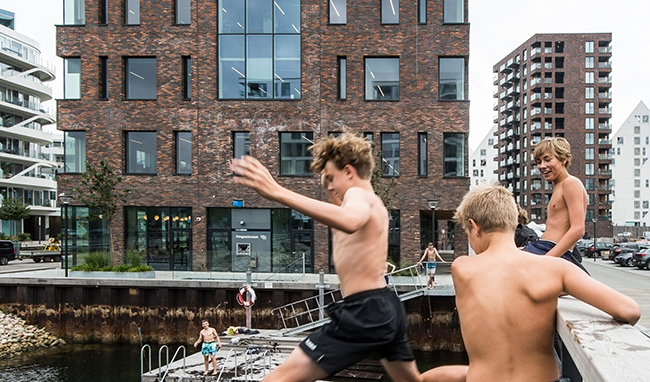
The research deals with developing and extending the existing knowledge pool on tectonic theory in architecture by exploring and investigating its potential as an interdisciplinary framework and systematic method for acquiring knowledge on architectural quality and its value for different stakeholders, across the disciplines of architecture, anthropology and economics. We ask, how, and to what extent can we describe and valuate the quality of architecture based on its potential for social and socio-economic value creation in an urban development context?
The project is an interdisciplinary Industrial PhD Project conducted in collaboration with AART Architects and University of Copenhagen, Department of Food and Resource Economics. The project is funded by the Innovation Fund Denmark & AART Architects.
Lead researcher: PhD Student Eszter Sántha, Supervisors: Associate Professor Marie Frier Hvejsel CREATE/AAU, Head of Impact Mia Kruse Rasmussen AART Architects, and Professor Jette Bredahl Jacobsen IFRO/KU
Photo credits: AART Architects
Everyday Tectonics?
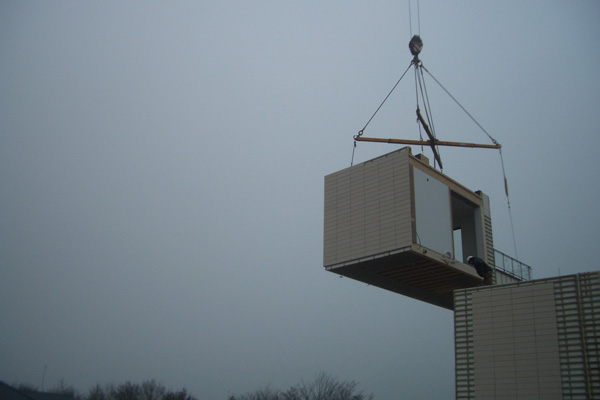
Architectural quality in prefab construction? Photo credits: Marie Frier Hvejsel
Research theme dealing with that of developing and extending the existing body of knowledge related to tectonic theory in architecture, usually applied in describing the unique architectural quality of high-end iconic works of architecture, to include and address everyday architectural practice, herein the current challenges of the building industry. Is it possible to qualify everyday architectural practice by means of tectonic theory and practice, we ask?
Lead researcher(s): Associate Professor, Marie Frier Hvejsel
Collaboration: The research theme is explored in collaboration with Professor Anne Beim, Royal Danish Academy / CINARK
Key Activities: Special issue of Nordic Journal of Architectural Research on the topic 'Everyday Tectonics?' co-edited by: Marie Frier Hvejsel, Anne Beim, Charlotte Bundgaard, Ulrik Stylsvig Madsen, Madeleine Granvik, Anni Vartola, & Claus Bech-Danielsen
Tectonics without architecture
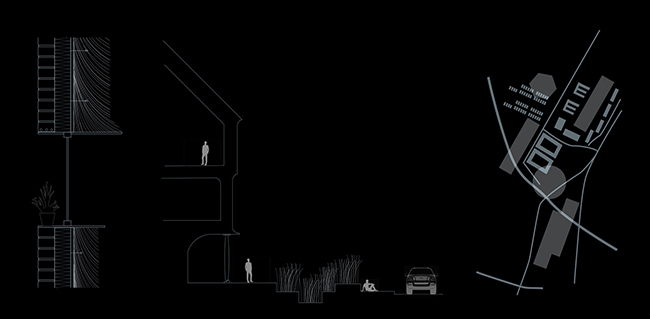
Tectonics without Architecture is an interdisciplinary exploration of the intersection of tectonic architectural theory (Stoffwechseln) and chemical engineering (Material Flow Analysis) towards a critical awareness of materials flows in the built environment. In chemical engineering the notion of “sink” or “safe sink” appears as a crucial part of how an entire system-boundary (whole) maintains itself in environmentally and socially sound ways. In parallel, Tectonic design theory is a discourse that centralizes relations between “parts” and “wholes” across scales and functions (services) across aspects of making, using and disposing architecture. The doctoral study is concerned with developing a critical method and design scenario for introducing the concept of the “sink” (safe sink from chemistry) as a hithertoo unexplored 'part' of the urban environment, a new critical spatial typology in conceiving the ecology of the entire material flow across architecture and urban design as a whole.
The project is a doctoral study funded by CREATE, Department of Architecture, Design & Media Technology, Aalborg University.
Researchers: PhD student Kemo Usto. Supervisors: Associate Professor Marie Frier-Hvejsel CREATE/AAU and co-supervisor Associate Professor Camilla Brunsgaard CREATE/AAU.
Furnishing Tectonic Method
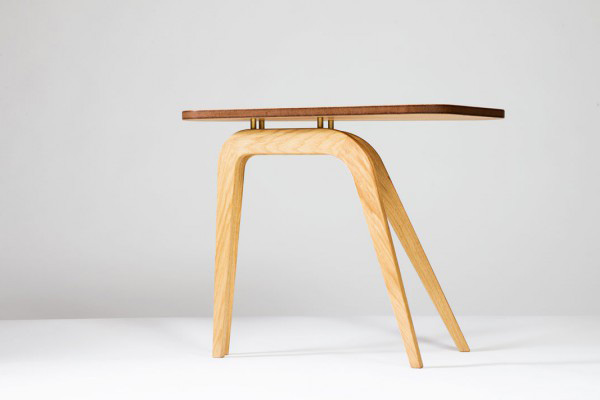
Antelope table’ Photo Credits: Frier Architecture
Due to its immediate proximity to the human scale furnishing holds a unique potential in grasping and describing the tectonic relations between aesthetic ‘gestures’ and technical ‘principles’ in architecture in general. The research theme ‘Furnishing Tectonics’ deals with that of developing and applying furnishing as a critical means in the development of tectonic architectural method applicable in architectural practice as well as education. Can the furniture scale be applied as a critical lens enabling an articulate view at the tectonic challenges that govern architectural practice, we ask?
Lead researcher(s): Associate Professor, Marie Frier Hvejsel
Urban Tectonics
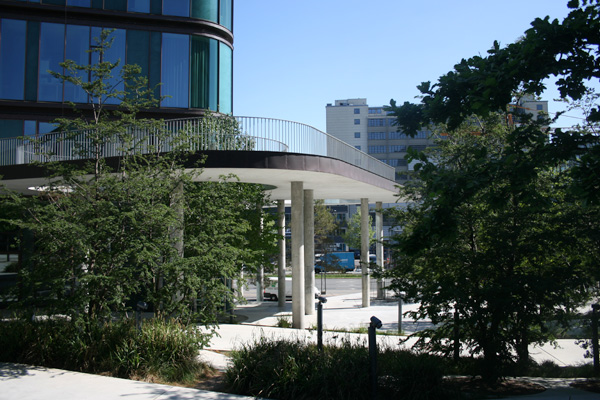
The research area ‘Urban Tectonics’ investigates whether the methodological potential of tectonic architectural theory as a critical means in bridging aesthetics and technique at the architectural scale, can be developed and applied in a mutual addressing of the multiple environmental challenges that threat to deepen the gap between the disciplines of architecture and urban design. Can the notion of tectonics, primarily applied in qualifying the act of joining elements at the architectural scale be extended and developed to qualify the joining of urban surface and architectural volume across scale, we ask?
Lead researcher(s): Associate Professor, Marie Frier Hvejsel, Associate Professor Lea Louise Holst Laursen, & PhD Student Elias Melvin Christiansen